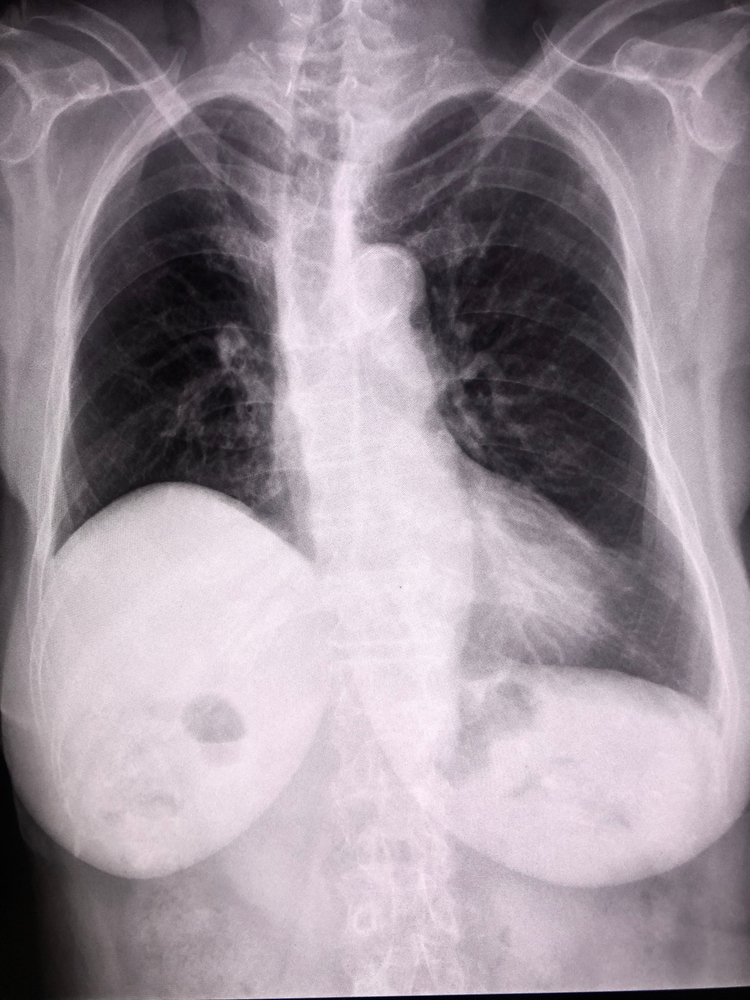
What to Know About Pulmonary Hyperinflation
Breathing is an essential and automatic function of the human body. We rarely think about it, but our lungs work tirelessly to take in oxygen and expel carbon dioxide. However, in certain medical conditions, the lungs can experience abnormalities, one of which is pulmonary hyperinflation. From the causes of hyperinflated lungs and symptoms to diagnosis, treatment, and management. We will discuss everything you need to know about this condition.
Understanding Pulmonary Hyperinflation
Pulmonary hyperinflation is a condition characterized by the overinflation of the lungs. It occurs when there is an excessive increase in lung volume beyond what is considered normal during the breathing cycle. In simpler terms, the lungs become abnormally inflated, which can lead to a range of respiratory issues and discomfort.
Hyperinflation typically affects the alveoli, which provide gas exchange in the lungs. When these air sacs become enlarged and overfilled with air, resulting in higher lung volume and lower lung function.
Causes of Pulmonary Hyperinflation
Several underlying medical conditions and factors can contribute to pulmonary hyperinflation:
Chronic Obstructive Pulmonary Disease (COPD)
COPD, including emphysema and chronic bronchitis, is one of the primary causes of pulmonary hyperinflation. In COPD, the airways become narrowed, making it difficult to exhale completely. As a result, air gets trapped in the lungs, leading to hyperinflation.
Asthma
Severe and poorly controlled asthma can cause air trapping and hyperinflation. In asthma, the airways become inflamed and constricted, hindering the normal flow of air in and out of the lungs.
Cystic Fibrosis
This genetic disorder affects the respiratory and digestive systems, leading to the production of thick and sticky mucus. The mucus can obstruct airways, trapping air in the lungs and causing hyperinflation.
Chronic Bronchitis
Chronic bronchitis, a type of COPD, involves persistent inflammation of the airways. This inflammation can result in the accumulation of mucus and air trapping.
Emphysema
Emphysema damages the alveoli, reducing their elasticity and causing them to remain inflated, even during exhalation.
Alpha-1 Antitrypsin Deficiency
This genetic condition can lead to the development of emphysema, which, in turn, can cause hyperinflation.
Severe Respiratory Infections
Certain severe respiratory infections, such as severe pneumonia or acute respiratory distress syndrome (ARDS), can result in lung damage and hyperinflation.
Aging
As individuals age, their lung tissue can lose elasticity, making it harder to exhale completely and leading to mild hyperinflation.
Air Trapping
In some cases, hyperinflation can occur due to simple air trapping without any underlying medical conditions. This is often seen in individuals who breathe shallowly or rapidly.
Symptoms of Pulmonary Hyperinflation
Pulmonary hyperinflation can manifest with a range of symptoms, although they may vary depending on the underlying cause and severity of the condition. Common symptoms include:
Shortness of Breath
Dyspnea or difficulty breathing is a hallmark symptom of pulmonary hyperinflation. It can be particularly noticeable during physical exertion.
Wheezing
Wheezing is a high-pitched whistling sound that occurs during breathing and is commonly associated with asthma and COPD.
Chronic Cough
A persistent cough, often productive of mucus, can be a symptom of hyperinflation-related conditions.
Chest Tightness
Some individuals with hyperinflation experience a sensation of tightness or discomfort in the chest.
Reduced Exercise Tolerance
As breathing becomes more challenging, individuals with hyperinflation may find it difficult to engage in physical activities.
Increased Respiratory Rate
Individuals may breathe more rapidly (tachypnea) to compensate for reduced lung function.
Fatigue
Chronic difficulty in breathing can lead to fatigue and reduced energy levels.
Bluish Skin (Cyanosis)
In severe cases, decreased oxygen exchange may cause the skin, lips, or nails to turn bluish.
Diagnosis of Pulmonary Hyperinflation
Diagnosing pulmonary hyperinflation involves a combination of medical history assessment, physical examination, and diagnostic tests. Healthcare providers may perform the following:
Pulmonary Function Tests (PFTs)
PFTs measure lung function, including the volume of air inhaled and exhaled, as well as how well the lungs transfer oxygen and carbon dioxide. Abnormal PFT results may indicate hyperinflation.
Chest X-ray
A chest X-ray can provide visual evidence of hyperinflated lungs and help identify potential underlying causes.
CT Scan
A CT (computed tomography) scan provides detailed images of the lungs, helping to assess their structure and detect abnormalities.
Arterial Blood Gas (ABG) Test
An ABG test measures the oxygen levels and carbon dioxide in the blood, providing insights into lung function.
Spirometry
Spirometry is a type of PFT that involves breathing into a machine to measure lung capacity and airflow.
Bronchoscopy
In some cases, a bronchoscopy may be performed to examine the airways and collect samples for analysis.
Management and Treatment
The management of pulmonary hyperinflation primarily focuses on addressing the underlying cause and improving lung function. Treatment options may include:
Medications
Bronchodilators
These medications help relax the airway muscles, making it easier to breathe. They are commonly used in asthma and COPD management.
Anti-inflammatory Drugs
Corticosteroids and other anti-inflammatory drugs can reduce airway inflammation and mucus production.
Mucolytics
A mucolytic medication thins mucus, making it easier for the airways to clear.
Oxygen Therapy
Supplemental oxygen therapy is recommended for individuals with severe hypoxemia (low blood oxygen levels).
Pulmonary Rehabilitation
Pulmonary rehabilitation programs offer a comprehensive approach to improving lung health. They typically include exercise training, education, and breathing exercises.
Lifestyle Modifications
Smoking Cessation
If smoking is a contributing factor, quitting smoking is essential.
Exercise
Regular physical activity can help improve lung function and overall fitness.
Breathing Techniques
Learning and practicing specific breathing techniques can aid in managing breathlessness.
Surgical Interventions
In some cases, surgical interventions may be necessary, such as lung volume reduction surgery (LVRS) or lung transplantation for advanced cases of hyperinflation.
Does getting vaccinated help with hyperinflated lungs?
Vaccinations can indirectly benefit individuals with hyperinflated lungs by reducing the risk of respiratory infections. Here’s how:
Influenza Vaccine
The flu can lead to hyperinflated lungs, and vaccination can help prevent or mitigate the severity of flu-related illnesses.
Pneumococcal Vaccines
Pneumococcal vaccines, such as the pneumococcal conjugate vaccine (PCV13) and the pneumococcal polysaccharide vaccine (PPSV23), protect against bacterial pneumonia and other infections caused by Streptococcus pneumoniae. These vaccines are for individuals at increased risk of respiratory infections, including those with chronic lung diseases.
Prognosis and Outlook
The prognosis for patients with pulmonary hyperinflation varies according to the underlying cause, the degree of severity, and the effectiveness of treatment. With appropriate medical management and lifestyle adjustments, many individuals can lead fulfilling lives despite having hyperinflation-related conditions.
Timely diagnosis and intervention play a pivotal role in effectively managing pulmonary hyperinflation and halting the progression of lung function decline. Scheduling routine check-ups at a specialized Lung and Sleep Disorder Clinic is paramount for closely tracking your health journey and making necessary adjustments to your treatment strategy.
Conclusion
Pulmonary hyperinflation is a complex respiratory condition that can significantly impact an individual’s quality of life. Understanding the causes, symptoms, and management options for this condition is essential for both healthcare professionals and individuals experiencing it.
If you or someone you know is exhibiting symptoms suggestive of pulmonary hyperinflation, seeking medical evaluation and early intervention is vital. Timely diagnosis and appropriate treatment can help manage the condition effectively, alleviate symptoms, and improve lung function, ultimately enhancing the overall well-being of those affected by this condition.
ALSO READ: Naturopathy Treatment – McDowall Integrative Psychology & Healthcare



